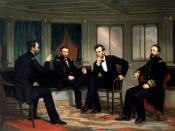In the book, "Women and the Work of Benevolence: Morality, politics, and class in the 19th century", author Lori D. Ginzberg places a wide variety of middle-class women reformers ÃÂ benevolent workers, moral reformers, temperance advocates, and charity organizers ÃÂ in the context of changing class relations and political structures over the course of the nineteenth century. Ginzberg offers a carefully interpreted look at women reformers immediately prior to the Civil War (antebellum). In two especially fine chapters, she argues that the ÃÂantebellum equationÃÂ of benevolence with female morality sheltered benevolent women considerable political influence and shielded their widespread involvement in businesslike activities, offering examples or womenÃÂs use of corporate organization forms that, as she pointed out, ÃÂcontradicted everything we thought we knew about the legal status of married women in the antebellum (pre-civil war) eraÃÂ (pg. 50). To account for her findings, she tempers the familiar interpretation of women reformers as proto-feminists with the caution that reform rhetoric also allowed for the emergence of an antebellum middle class that obscured its own class privilege by wrapping itself in the mantle of benevolent virtue.
Each GinzbergÃÂs chapters has three guiding concerns. One is understand how, in the ÃÂrhetoric and then in fact, womenÃÂs influence leapt across barriers, permitting them to enter all but the most protected male bastions.ÃÂ Ginzberg finds this rhetoric expressed both in public of the time and private correspondence and diaries. In the earlier years, ideas about morality and gender were conflated under rubrics of Christianity in such a way as to facilitate female activism while ostensibly eschewing direct political involvement. Later, the concept of benevolence became increasingly secular. Ginzberg ably describes the double thrust of benevolence rhetoric throughout the period. On the one hand, it provided a limited sanction for expansion of womenÃÂs interests and influence;...


